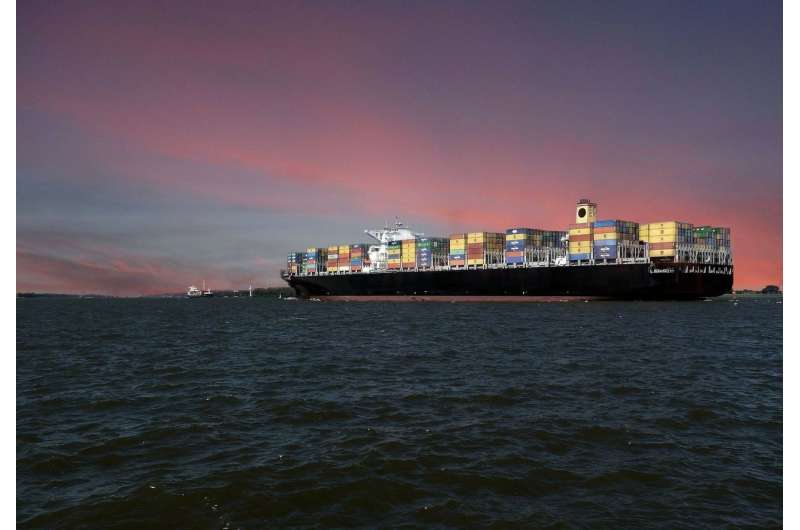Cargo ships are emitting boatloads of carbon, and nobody wants to take the blame

Maritime shipping transports around the world by volume. Moving large amounts of goods such as oil, computers, blue jeans and wheat across oceans drives the global economy, making it to buy almost anything.
But hauling goods around by sea requires roughly of very dirty fuel, producing giving the international maritime shipping industry roughly the .
At summits like the COP24 meeting held in Poland in December of 2018 and in agreements such as the one struck in Paris in 2015, national governments have largely ignored the carbon dioxide emissions from international shipping entering the atmosphere.
This is a real problem because if no country is held responsible for emissions, no government will try to reduce them. We believe as that one way forward is to make the responsibility of specific countries with the goal of increasing pressure to encourage emission reductions.
A globalized industry
In international climate change negotiations, countries are in charge of reducing their own greenhouse gas emissions. Carbon dioxide emissions from international shipping could be added to this responsibility. Figuring out whose emissions they are, however, is no easy task.
Perhaps no industry . The ships themselves have , . They carry goods sourced in multiple places as they traverse the high seas, stopping in many countries.
A single ship might be connected to dozens of companies. It can be built by one company, owned by a group of other companies, and operated by a group of yet more companies. It may carry cargo for many hundreds of businesses destined for many ports run by different companies, be crewed by an outsourced staffing firm, and insured by another company.
The expects trade to continue to grow in the coming decades. The , the international body that regulates shipping, predicts that as trade grows, carbon dioxide emissions from international shipping could .
To date, that organization has done little to address climate change even though it did that it aims to halve emissions from shipping by 2050 rather than letting them soar unchecked. , the world's largest shipping company, that it aims to reduce its emissions to zero by 2050.
This is great news, but neither the IMO nor Maersk have provided any detailed information about how these goals will be achieved. Both support more research into fuel-efficient technologies for shipping, but the .
So far, no country has taken ownership of any emissions from international shipping. Only emissions from domestic shipping, such as , are counted.
The are only now beginning to be made. These ships would most likely have much smaller carbon footprints than those in use today, but they can now only before having to charge their batteries again. The for long maritime voyages for large vessels.
Not mine
There are several ways that emissions from international shipping could be allocated to specific countries. In 1996, the countries that had ratified the United Nations – the first global treaty on climate change – identified to get this done. Over two decades later, there has been no progress with any of them.
The eight options include allocating carbon dioxide emissions to countries based on ships use is sold, where ships are registered, or the origins or destinations of the ships. Each option would lead to radically different emissions responsibilities for individual countries, making it even harder for everyone to reach consensus.
We believe that a critical first step no matter what approach prevails would be to create a comprehensive and open database of international shipping routes and maritime emissions. That would establish a shared baseline for quantifying and allocating carbon dioxide emissions to countries.
Given all that is at stake in a warming world, it is high time that countries stop ignoring a big chunk of the human produced carbon dioxide entering the atmosphere. To avoid dangerous climatic changes, it must be all hands on deck.
Provided by The Conversation
This article is republished from under a Creative Commons license. Read the .![]()



















